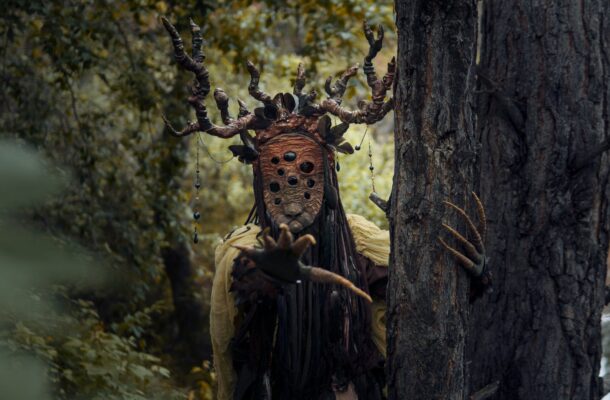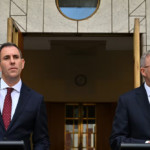The myths of mankind

At school we were chastised for lying whilst in the real world people from spin ‘doctors’ and politicians to advertising ‘executives’ and used car salesmen are admired for it. We soon find it is difficult, if not impossible to get through a day without lying in some way, from saying ‘Yes’ when you really mean ‘No’ – every nationality has a way of achieving this – to denying we were speeding.
A lie of any kind involves indicating something is true when we are aware it is not. We don’t have to necessarily communicate the lie in so many words, just make the other person believe something is true – which is how effective spin doctors work.
A world built on stories
We are surrounded by myths and monsters, even the Loch Ness Monster, the Yeti and Bigfoot have an Australian cousin in the Bunyip. So, are these fantastical creates outright lies or do they speak of something deeper in the human psyche? We might even hope they will never be scientifically proven true or false. If finally falsified, we will have lost a point of intrigue; if true, then after a short period of exhilaration they will lose their sheen of wonder.
“The latest incarnation of Oedipus, the continued romance of Beauty and the Beast, stands this afternoon on the corner of 42nd Street and Fifth Avenue, waiting for the traffic light to change.” – Joseph Campbell
That statement, fanciful as it sounds, is simply a shorthand way of saying that everyone is a creature of myth, and that our ancient legends and origin stories remain the master keys to the human psyche. The science-minded 19th century Victorians who dismissed myths as superstitious twaddle were guilty of a kind of scientific superstition themselves: the belief that reason could explain all human motives.
Shaped by psychoanalysis, anthropology and over a century of archaeological discovery, modern scholarship has replaced the Victorians’ disdain for myth with respect and even awe. Mythology, its partisans now claim, tells us as much about humanity’s deepest fears, sorrows, joys and hopes as dreams may reveal about an individual.
“Myths are public dreams,” says Joseph Campbell, who is probably the world’s leading expert on mythology. “Dreams are private myths. Myths are vehicles of communication between the conscious and the unconscious, just as dreams are.”
The trouble is, Campbell asserts, that this communication has broken down in the modern Western world. The old myths are no longer operative, and effective new myths have not arisen to replace them.
As a result, he maintains, the West is enduring an agony of reorientation matched only by a period during the 4th millennium B.C., when the Sumerians first conceived the concept of a mathematically ordered cosmos and began to change man’s concept of the universe around him.
What makes a myth?
In Campbell’s academic definition, a myth is a dreamlike “symbol that evokes and directs psychological energy.” These vivid stories and legends are woven into a larger cultural fabric that express a culture’s attitude toward life, death and the universe around it.
The Greek myth of Prometheus, the Titan who stole fire from Olympus and gave it to man, thus symbolizes the aspiration of humanity to challenge the powers of nature. The almost contemporary Hebrew myth of the trials of Job, on the other hand, is an apology for man’s submission to a power above nature, even when that power seems cruel and unjust.
These two myths illustrate the philosophies of two divergent cultures. The Greek stresses man’s heroic striving for human values and civilization: the Hebrew emphasizes, rather, man’s humble spiritual surrender to God’s will. Abraham’s willingness to sacrifice Issac is the supreme symbol of this attitude. Though not true in any literal sense, a myth is not what it is considered to be in everyday speech—a fantasy or a misstatement. It is rather a veiled explanation of a deeper social truth.
The transformation from fact to a myth is endlessly fascinating. The quarrels of King Agamemnon and Achilles related in The Illiad, for example, may be flights of fancy but there was a Trojan War in which great heroes fought. The psychological duel between Faust and the Devil related by Marlowe and Goethe has become a ubiquitous philosophical and psychological metaphor, but George Faust was a real German magician who was born about 1480 and made claims to superhuman power, including the ability to restore the lost works of Plato and Aristotle and repeat the miracles of Christ.
Yet it was not until poets and playwrights like Christopher Marlowe and Johann Wolfgang von Goethe used this historical snippet to explore wider themes through their art that Faust became famous and achieved mythic status. The Faust story appealed to Marlowe and to Goethe because the times in which they lived were characterised by struggle between faith and reason and Faust allowed them to personify and explore it.
The purpose of myth
Far from being irrelevant relics from a bygone age, myths can still serve the same importance purpose in modern society. Their vivid imagery can still awaken and maintain a sense of awe, gratitude and even rapture when contemplating the mystery of the universe and man’s existence within it, saving individuals from being overwhelmed by fear.
Mythology offers mankind a comprehensive, understandable image of the world around us, roughly in accord with the best scientific knowledge of its time. In symbolic form, it tells us what our universe looks like and where we belong within it. Despite our modern scientific worldview, many people cling to some form of mythology to make sense of it.
The third function of a living mythology is to support the social order through rites and rituals that will impress and mold the young. In India, for example, the basic myth is that of an impersonal power, Brahma, that embodies the universe. The laws of caste are regarded as inherent features of this universe and are accepted and obeyed from childhood. Cruel as this may seem to Westerners, the myth of caste does give Indian society a stability it might otherwise lack and does make life bearable to the impoverished low castes.
The fourth and, in Campbell’s view, the most important function of mythology, is to guide the individual, stage by stage, through the inevitable psychological crises of a useful life: from the childhood condition of dependency through the traumas of adolescence and the trials of adulthood to, finally, the deathbed.
Every age and culture had its own myths to sustain it, and myths have splintered, rather than coalesced or evaporated, in today’s ‘globalised’ world. “There is no general mythology today,” Campbell says, “nor can there ever be again. Our lives are too greatly various in their backgrounds, aims and possibilities for any single order of symbols to work effectively on us all.”
He believes that new myths will be internalised and individual, and each individual must find their own. However, human nature is eternal, though each generation believes it rediscovers it anew. The hippie who leaves society and goes off to a commune, for example, is being guided by a mythological map of withdrawal and adventure laid down by Christ in the desert, the Buddha at Bodh-Gaya, and Mohammed in his cave of meditation at Mount Hira.
While the term ‘myth’ may be synonymous with ‘untrue’ in modern public discourse, these foundational tales continue to illustrate the earliest origins of human society, and the unbound imagination of the human mind.

Alan Stevenson spent four years in the Royal Australian Navy; four years at a seminary in Brisbane and the rest of his life in computers as an operator, programmer and systems analyst. His interests include popular science, travel, philosophy and writing for Open Forum.















